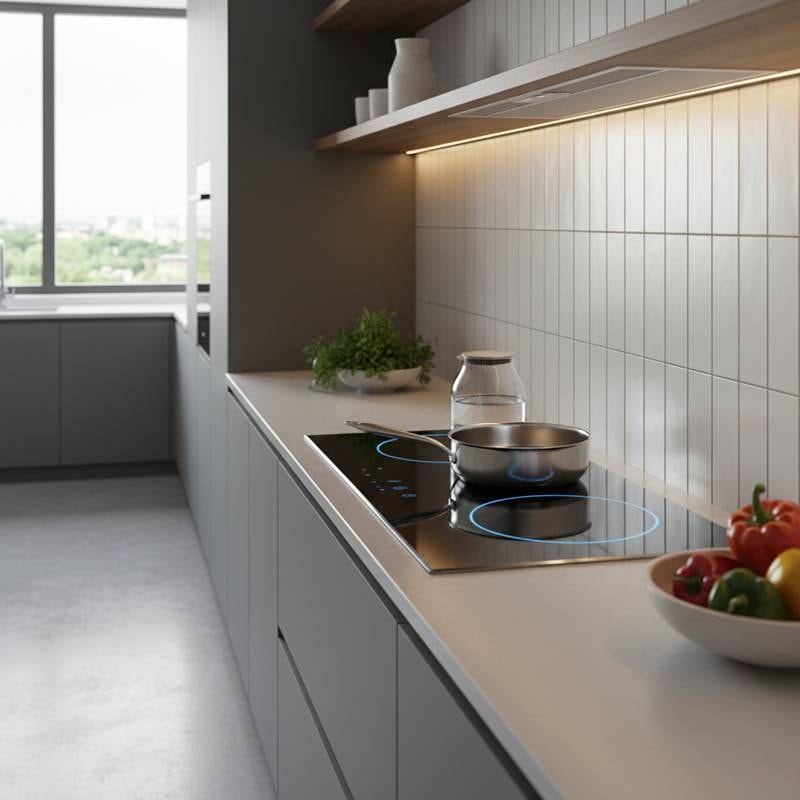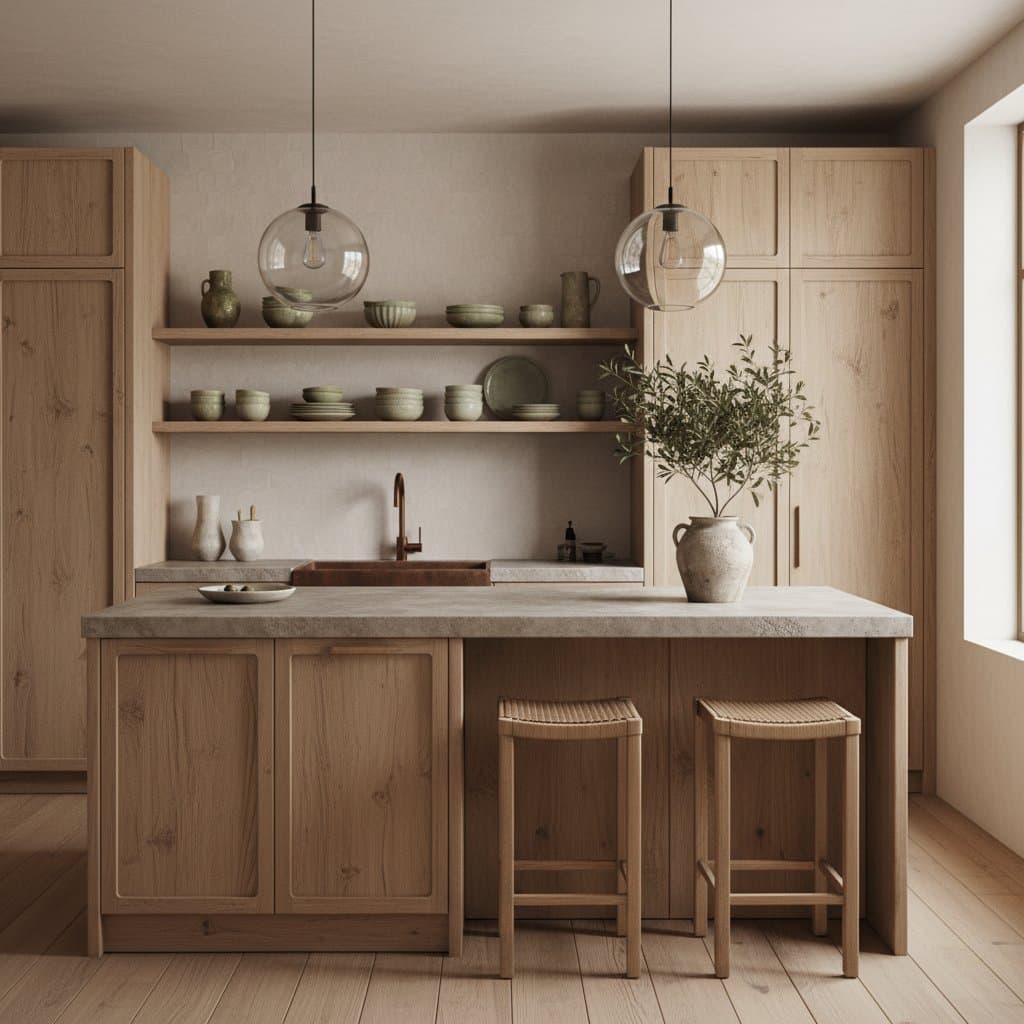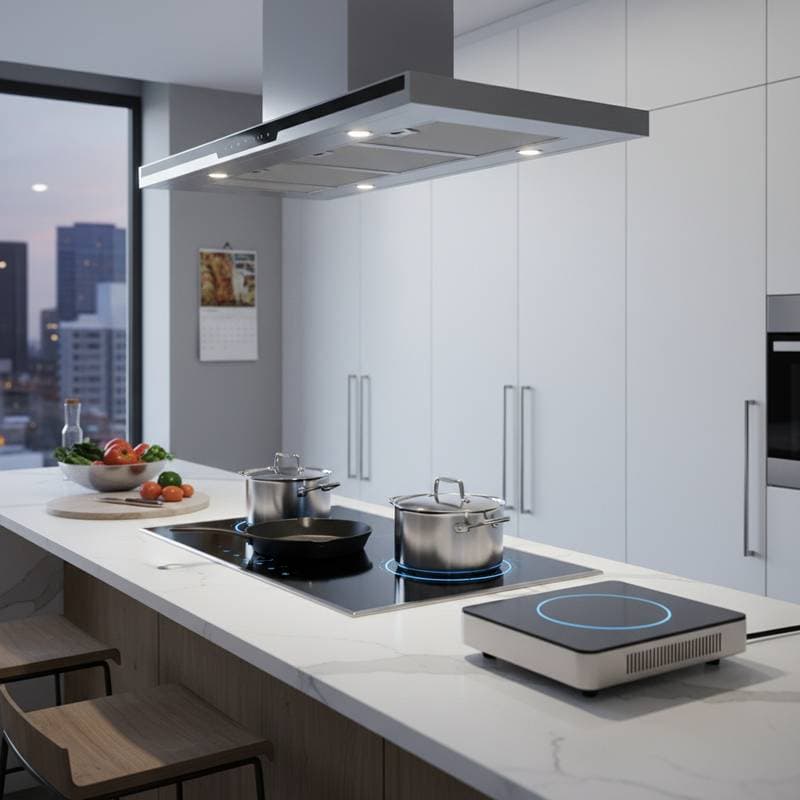Induction Zones: Why Ditch Gas for Electric Kitchens
Every kitchen tells a story of its time. The materials, layout, and technology within it reflect how people live, cook, and gather. For decades, the blue flame of a gas burner symbolized culinary authenticity. Yet, as awareness grows around indoor air quality, energy efficiency, and design innovation, a quiet revolution takes place. Induction cooking, once a specialty feature in professional kitchens, now defines the contemporary home chef's workspace. The shift involves more than mechanics. It encompasses aesthetics, environmental impact, and daily experience.
1. The Elegance of Precision
An induction cooktop serves as both a design statement and a functional upgrade. Its surface, often a seamless expanse of black ceramic glass like the Miele KM 7897 FL, offers sculptural simplicity that complements minimalist cabinetry and stone countertops. Unlike gas ranges that dominate visual space with grates and knobs, induction surfaces remain visually calm, reflecting light and creating spatial continuity.
Beneath that sleek plane lies technology of remarkable precision. Magnetic energy transfers heat directly to the cookware, leaving the surrounding surface cool to the touch. This setup provides instantaneous temperature control without wasted energy. Chef and designer Lara Vance of Atelier Vance Interiors describes it as "the poetry of control," noting how the quick response allows fluid movement between simmering and searing without visual clutter or excess heat.
2. Clean Air, Clear Conscience
Design conversations increasingly include health and sustainability. Gas cooking, once favored for its immediacy, releases nitrogen dioxide and other pollutants into indoor air. Even with ventilation, these emissions accumulate. Induction technology eliminates combustion entirely, resulting in a cleaner, safer kitchen environment.
Architect Marcus Hill of Studio Forma often specifies induction systems in urban apartments where ventilation challenges arise. "Clients notice the difference immediately," he said. "Their kitchens feel fresher, and their finishes stay cleaner longer." The absence of open flame also reduces room heat, which means cabinetry, paint finishes, and countertops experience less thermal stress over time.
3. Aesthetic Integration and Material Harmony
Induction cooktops integrate beautifully into diverse kitchen styles. In contemporary projects, designers often recess the unit slightly into marble or quartzite slabs, creating a flush, gallery-like surface. In heritage homes, the same technology pairs with traditional cabinetry through models with subtle framing or custom control interfaces.
The Bosch Benchmark Series or Gaggenau CX 492 exemplify this refined balance. Their controls illuminate only when in use, preserving the purity of the countertop when powered down. Paired with brushed brass fittings or matte lacquer cabinetry, the look achieves both modernity and timelessness. Materiality takes precedence, allowing wood grain, polished concrete, or terrazzo to define the room's identity rather than appliance hardware.
4. Energy Efficiency and Environmental Responsibility
Induction systems demonstrate remarkable efficiency. Approximately ninety percent of the energy produced goes directly into heating the pan, compared to around forty percent for gas. This efficiency leads to faster boil times and lower utility costs. For households shifting toward electrification, induction cooking fits seamlessly into broader sustainability goals, especially when paired with renewable energy sources.
Environmental designer Sofia Chen of Element Studio often includes induction units in her net-zero home projects. "They embody the future of responsible design," she said. "Every element, from the hidden coils to the recyclable glass surface, supports long-term energy intelligence." The quiet hum of an induction field replaces the hiss of gas, marking a subtle transition to a more conscious form of living.
5. The Sensory Experience of Cooking
Cooking on induction feels distinct. Heat arrives instantly, yet the absence of flame creates serene focus on the food itself. The cook attunes to texture, aroma, and timing rather than managing the variability of gas. The surface remains cool around the pan, so spills do not scorch. Cleaning requires only a quick wipe with a soft cloth and mild detergent.
Designer Elena Ruiz of Forma Kitchen Design notes that clients often describe their first induction experience as "transformative." The smooth glide of a Dutch oven on a glass surface, the quiet concentration of heat, and the minimalist aesthetic all encourage mindfulness in daily routines. It turns cooking into an intentional act rather than a mechanical one.
6. Safety and Family-Friendly Functionality
For households with children or elderly family members, induction offers peace of mind. The surface heats only when compatible cookware is detected, automatically switching off when the pan is removed. There are no exposed flames or lingering hot elements. This safety feature allows more freedom in open-plan layouts where kitchens blend with living spaces.
Contractor Paul Simmons of HearthBuild Projects emphasizes that induction installations also simplify compliance with modern building codes focused on electrification. "It is safer, smarter, and easier to maintain," he said. "Clients appreciate both the performance and the security it provides."
7. The Art of Transition: Gas to Electric Conversion
For those replacing gas systems, conversion proves straightforward when guided by qualified professionals. Electric wiring and appropriate circuit capacity are required, but many older kitchens accommodate the shift with minimal structural change. Designers often use this opportunity to refresh countertop materials or introduce new ventilation solutions that match the cleaner aesthetic of induction.
Some homeowners choose hybrid ranges during the transition phase, though full conversion maximizes both performance and environmental benefit. The move away from gas also frees wall space from bulky venting systems, allowing more design flexibility for shelving, artwork, or architectural lighting.
8. Design Freedom and Future Flexibility
Induction technology supports a new level of design creativity. Units install flush within islands or integrate into modular cabinetry systems without the constraints of gas lines. This flexibility encourages more open, social kitchen layouts where cooking becomes part of the living experience.
Slim-profile models, such as the Fisher & Paykel CI905DTB3, allow multi-zone configurations, enabling users to move cookware freely across a unified surface. Designers can now treat the cooktop as a sculptural element rather than a mechanical fixture, integrating it into the visual rhythm of the space.
Embracing Induction in Daily Life
Adopting induction cooking represents more than a technical decision. It reflects a lifestyle choice that aligns with clarity, sustainability, and design coherence. The quiet surface and instant precision invite a calmer rhythm to daily life.
As more homes evolve toward electrification, induction technology stands at the intersection of design intelligence and environmental awareness. It respects the craft of cooking while embracing modern living's visual and ethical values.










